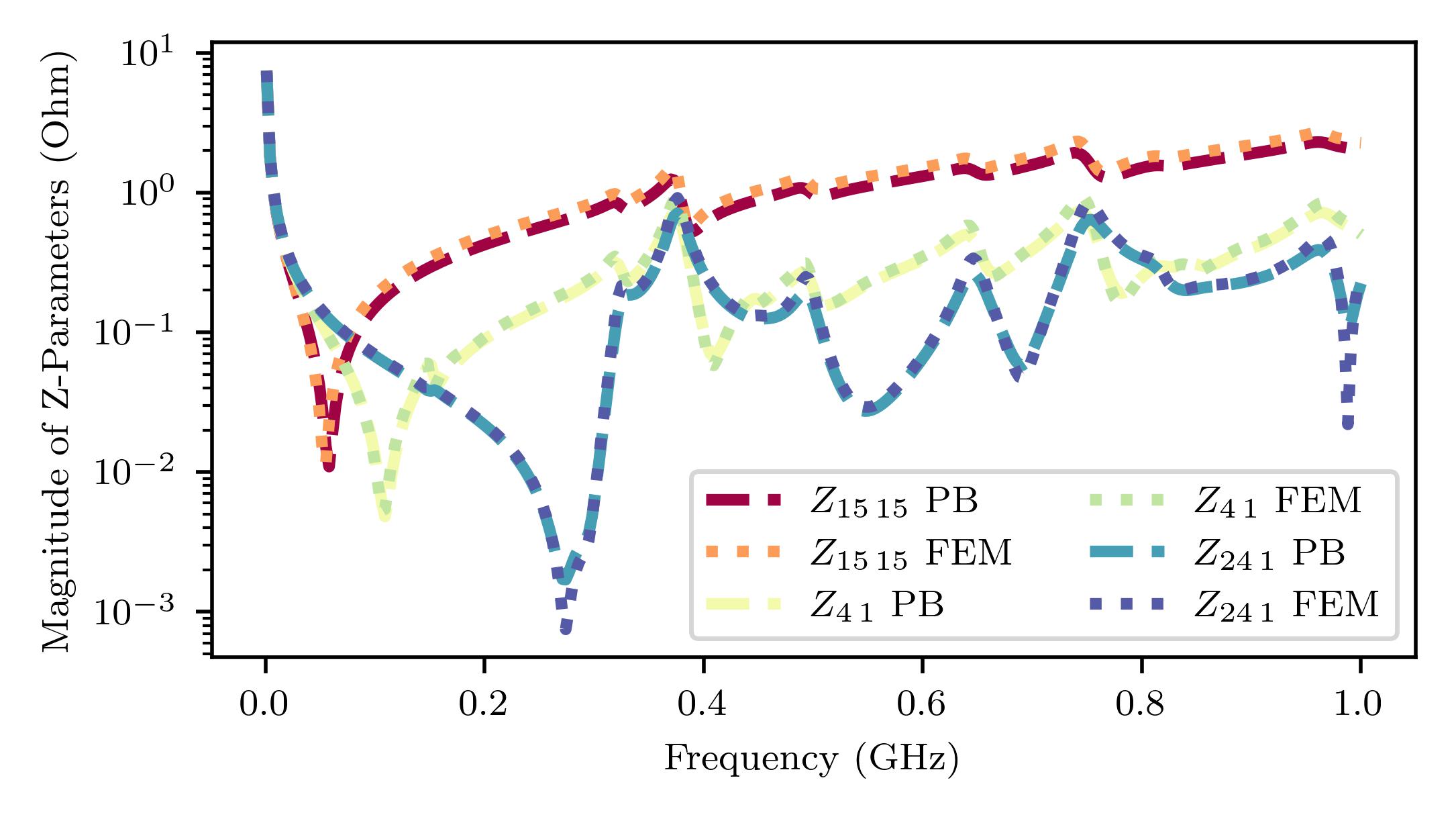The design of the printed circuit board (PCB) based power delivery network for high-speed digital systems is complex and requires large computational resources. In this contribution, we show the applicability of machine learning tools, explicitly artificial neural networks (ANNs), in the design process to partially replace numerical simulation tools. A common approach to improve the resource and time expensive design process is the application of advanced decoupling capacitor placement strategies such as evolutionary techniques, reinforcement learning, or Newton-Raphson techniques. All techniques try to reduce the amount of time required to get a sufficient PDN design. The problem of all listed tools is the requirement of knowledge about the electromagnetic behavior of the PDN. Usually this information is acquired by numerical simulations such as full-wave solver or analytical approaches. In this paper, a physics-based via model in combination with the contour integral method is used. Then, ANNs are trained to show the capability of partially replacing the numerical simulations. A schematic description of the application of ANNs is shown in Figure 1.
 Figure 1. Top level schematic of the application of ANNs. ANNs predict different values related to the electromagnetic characteristic of the PDN e.g. frequency of the first violation of the target impedance. Input features are characteristics of the PCB such as material parameters.
Figure 1. Top level schematic of the application of ANNs. ANNs predict different values related to the electromagnetic characteristic of the PDN e.g. frequency of the first violation of the target impedance. Input features are characteristics of the PCB such as material parameters.
The ANNs are trained to predict features of the PDN impedance such as the first null in the impedance or the first violation of the target impedance. Using the ANNs to predict features of the PDN impedance is a very fast process. However, before predictions are possible training data has to be prepared and the ANN has to be trained. The data generation process requires large amount of resources and time. Including the time for generating training data, ANN training, and ANN predictions shows the speedup is not always significant in direct comparison only numerical approaches. Therefore, in this paper the focus is on reusing data samples from different parameter ranges in the defined design space of the PDN. Based on two PCB structures having full copper planes, connected by vias, the possibility to reduce the required training data is shown by combining data sets of different design problem spaces in the design space.
ANNs are trained for different hyper-parameter configurations and for one output parameter, such as frequency of the first violation of the target impedance. Input features to the ANNs are geometries, materials, and connected components of the PCB, such as the size of the PCB. All input features are standardized. Frequency related output features are expected in the MHz frequency range. Therefore, output features are scaled to MHz showing much better performance than using Hz as output unit. For the training data, generation variations of the PDN with respect to features of the PCB are performed, e.g. position of vias. Additionally, for investigations related to the placement of decoupling capacitors different distributions of decaps are placed in a post processing step on circuit parameter level. This provides more than 40 000 data samples which can be used for training the ANNs. Three impedance curves of the data samples are shown in Figure 2 comparing the used numerical approach and results of the full-wave FEM solver.
 Figure 2. Comparison of self and transfer impedance of a PCB based PDN simulated with a physics-based model and full-wave finite element model.
Figure 2. Comparison of self and transfer impedance of a PCB based PDN simulated with a physics-based model and full-wave finite element model.
Using the trained ANNs the applicability to predict features of the PDN impedance is shown. Additionally, the possibility to reuse data samples for training ANNs is also shown. In the publication the importance of storing and organizing once created data samples is emphasized. Therefore, all raw data samples (circuit parameters) of the investigations are made available in the SI/PI-Database from TET at TUHH.
The paper referenced here received the Best Paper Award at DesignCon 2023. To read the entire DesignCon 2023 paper, download the PDF.

